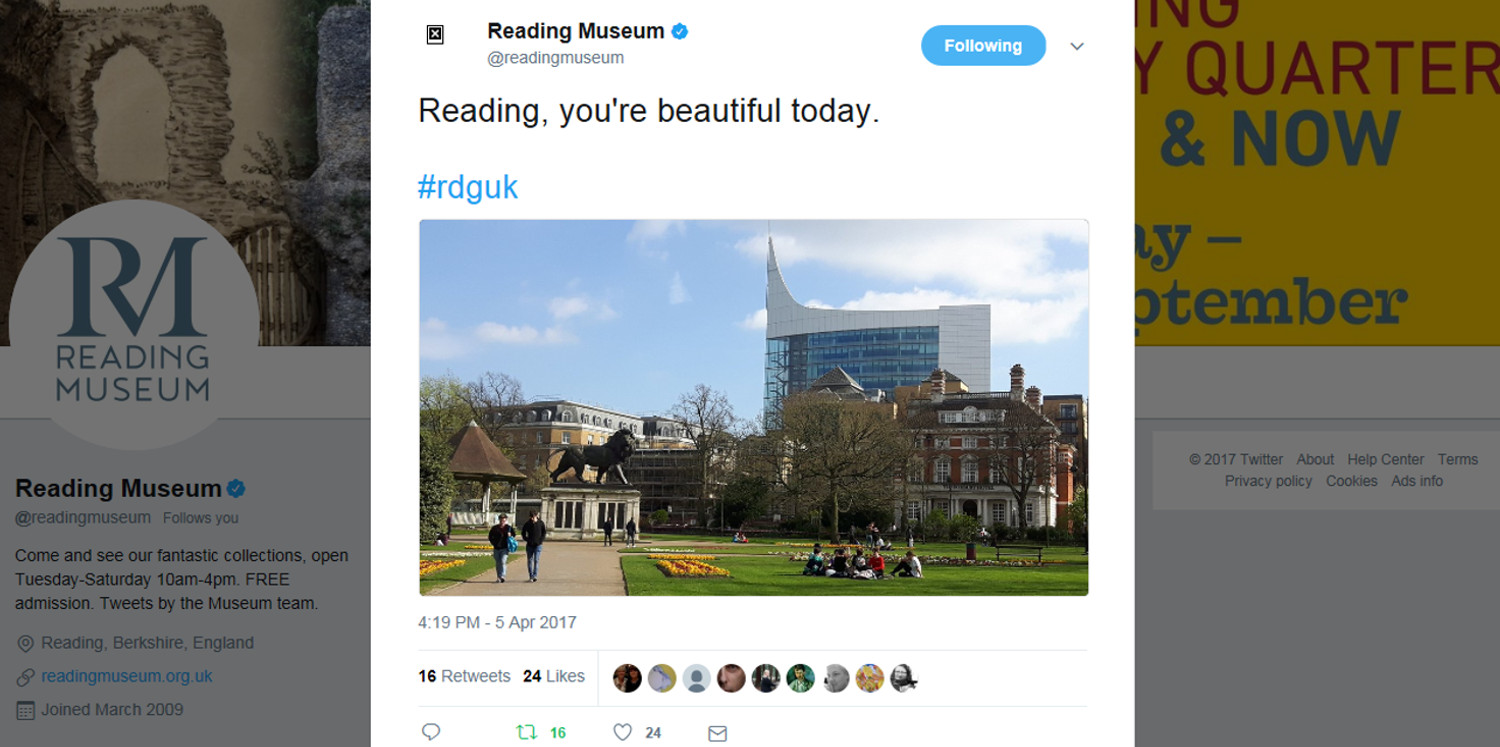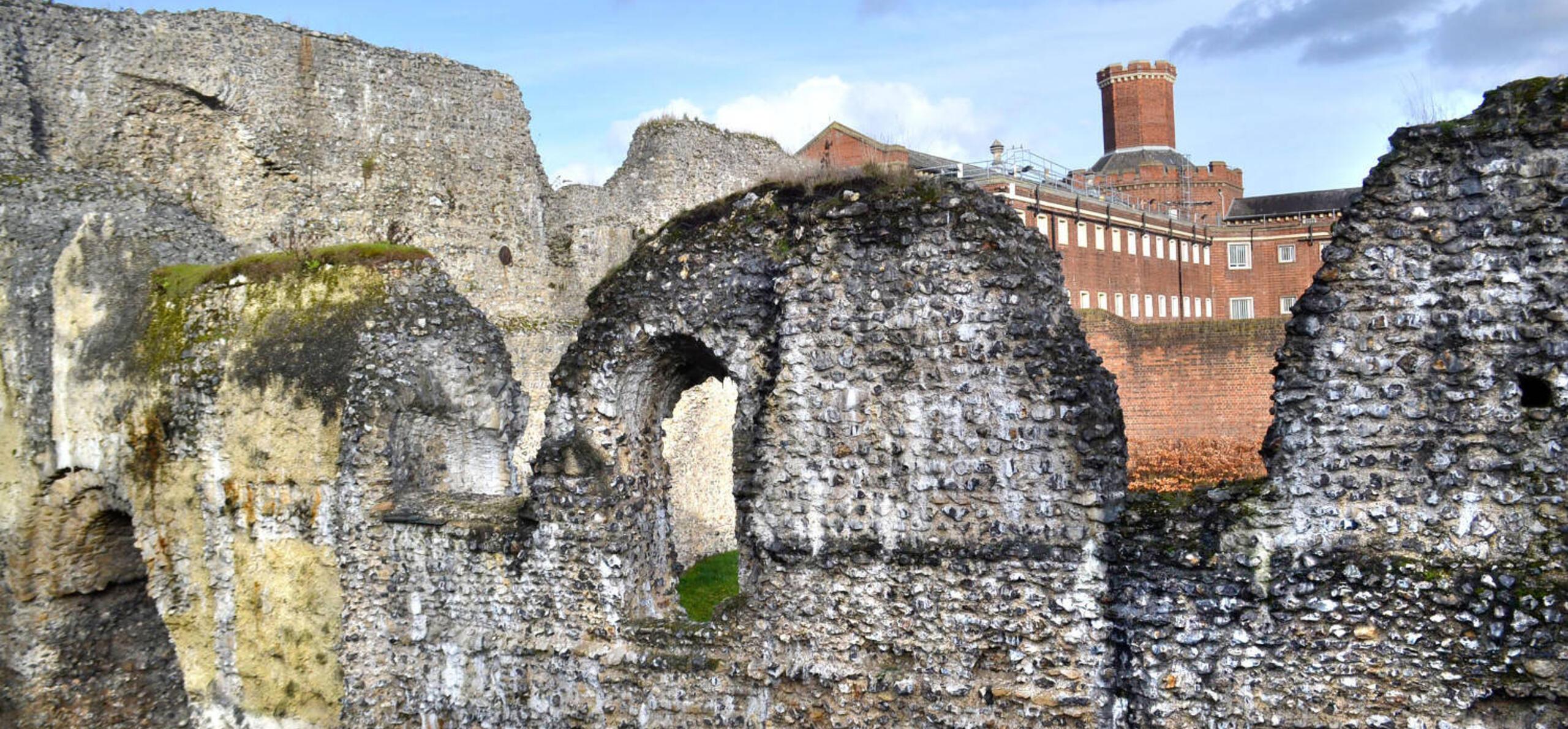Reading has too often been dismissed as being a modern place with little history. This isn’t a recent phenomenon. In the 1949 Murray’s Berkshire Architectural Guide, John Betjeman and John Piper described ‘the capital of the county is a much-maligned town’. While they agreed that ‘No town in the south of England hides its attractions more successfully from the visitor’, they showed that careful exploration would be rewarded.
This is a view we share at Reading Museum as shameless cheerleaders for our town and its fascinating history. We think Reading has plenty of heritage to shout about - the burial place of King Henry I of England, strong links with Oscar Wilde and Jane Austen, many of Britain’s famed nineteenth century architects, such as Soane and Gilbert Scott, designed buildings in the town and many great names of late industrial Britain are synonymous with Reading – the biscuits of Huntley & Palmers, the seeds of Sutton’s and the beer of Simonds (you can explore this history in our Story of Reading Gallery).
However a negative perception of Reading is still often held by people who have only seen it briefly from a train or the M4, and let’s face it this rarely gives the best view of most towns and cities. Reading’s own urban myths often give a rather pessimistic view, for example it is frequently repeated that Queen Victoria’s statue in Town Hall Square turns its back on the town as the Queen didn’t like Reading. In fact Victoria only ever passed through Reading on the Great Western Railway. Her statue by esteemed Reading sculptor George Blackall Simonds is facing the railway greeting arrivals from the station.
The RSA (Royal Society for the encouragement of Arts, Manufacturers and Commerce) has recently coined ‘Networked Heritage’ to describe how heritage shapes how people identify with the places they live, work and play. They see a role for heritage in conversations and plans for how we want places to develop into the future. This is an approach we have been taking in Reading – the Museum has been engaging in conversations like Where’s Reading Heading that have put heritage at the centre of Reading’s plans, policies and developments for the future. Reading’s draft Local Plan now proposes placing Reading’s heritage at the heart of its development plans for the next 20 years – it highlights opportunities to make even more of our considerable heritage, especially at Reading Abbey and Gaol.
In recent years the Museum has worked with partners to present our town’s history, and like Queen Victoria’s statue, to welcome visitors. We have done this in a number of ways, such as an ongoing programme of temporary exhibitions exploring aspects of the town’s past (including Music, Mud and Mayhem: 30 years of the Reading Festival, Reading at War and On Track: Reading’s railways past, present and future). Our improved digital presence particularly the Online Collections website explores the town’s history through the lens of our wide-ranging collections, including Reading Chronicle photographs and global collections reflecting Reading’s place in the world. More is planned working with our colleagues at the Museum of English Rural Life – another of Reading’s surprising heritage gems.
Beyond the Museum we have been revealing ‘Hidden Histories’ in Reading’s neighbourhoods (as part of The Happy Museum project). Research by local volunteers resulted in a series of popular history leaflets exploring the surprising heritage of Dee Park, Newtown and Oxford Road. This activity has been recognised beyond Reading. The Oxford Consultants for Social Inclusion noted recently that “the project drew on alternative historical narratives of clay excavations, red brick heritage, manufacturing and recent social history to shape remarkable civic stories”.
Our most ambitious scheme is the Abbey Quarter. Taking the precinct of Reading’s royal abbey and transforming it into a unique historical and cultural destination. This project, supported by the Heritage Lottery Fund and Reading Borough Council, puts this international monastic and royal heritage firmly on the map (Update - the conservation and interpretation was completed in summer 2018 and the Abbey is now fully open to the public).
The Museum’s work is part of a wider sea-change in Reading. In 2016 Reading’s cultural community came together to celebrate a year of arts, culture and heritage. Reading can now claim to be one of the major heritage sites in the south east. In 2016 the RSA rank Reading in the UK top 16% for historic built environment, 7% for industrial heritage, top 2% for museums, archives and artefacts. We are optimistic that Reading no longer wants to hide its attractions from its residents and visitors!

'Reading Your Beautiful' tweet





